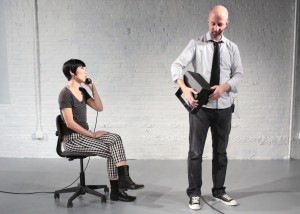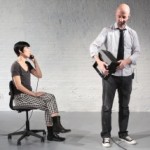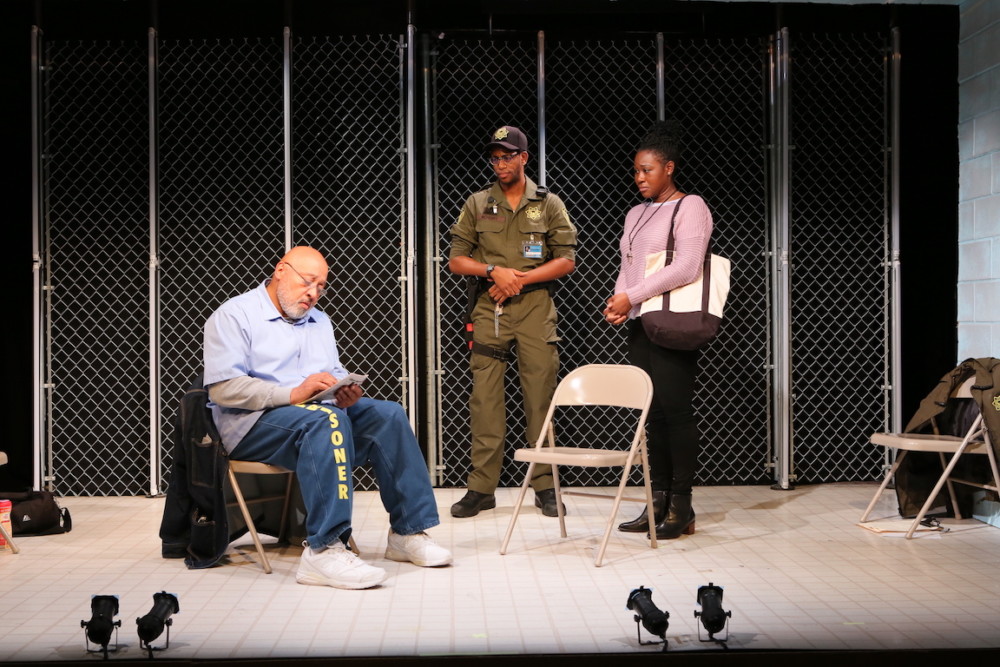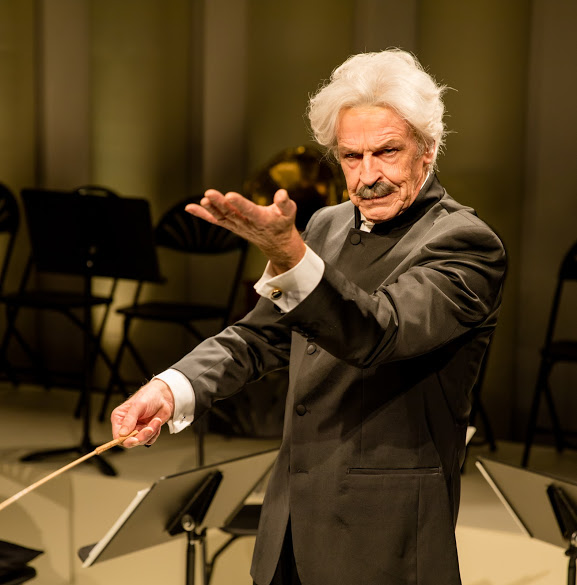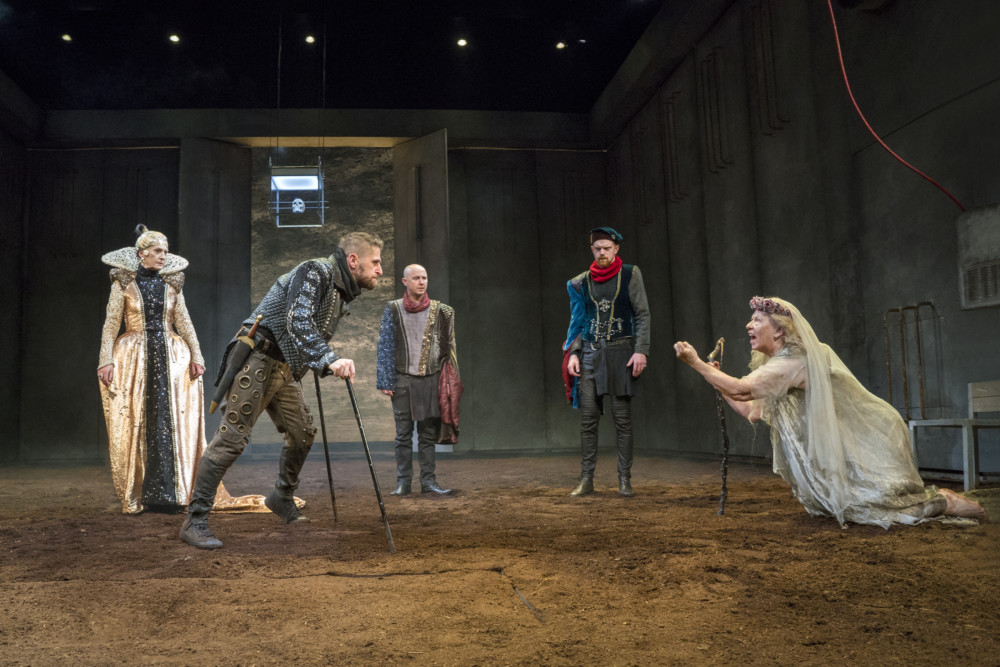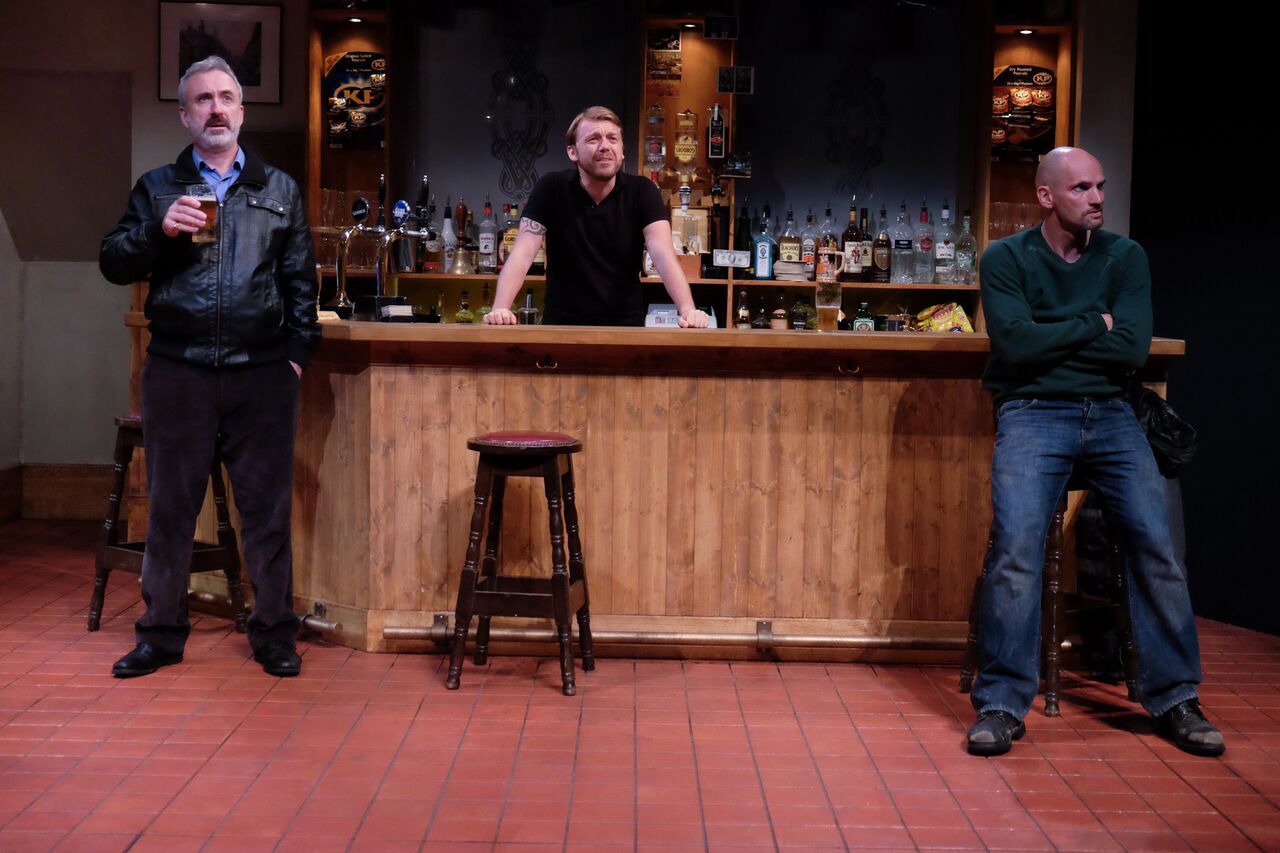By Joel Benjamin
Joe Diebes not only wrote Botch presented by HERE, but provided the concept, vocal algorithms, direction and design. Whew! He did all this “in collaboration with” his cast: Christina Campanella, Michael Chinworth, John Rose and Saori Tsukada, all young and very serious.
Botch is offered as “a broken word opera,” which it indeed is. In the large main floor space at the HERE arts facility, the audience was arranged in a circle. On four blackboards, the performers are first seen writing lists of what appears to be phonetically spelled words as well as drawing elaborate stories confuse until it becomes obvious that these cascades of words are the source text for Botch.
Before Botch begins sounds of traffic permeate the space. Then a male and female, half of the four, all of whom wear face microphones, face each other with one reading the video text as the other flashes hand signals. He, the speaker, varies the speed and tone of his reading until a large die is tossed and the other pair gets up to repeat this procedure, this time with some added electronic manipulation until the die is cast again.
Sometimes consonants were emphasized, sometimes vowels. Sometimes words were pronounced backwards and sometimes words were eliminated.
In Section Two, a pyramid shaped die becomes the symbol of change. Black tape is laid on the stage indicating where the office chairs on wheels are to be located. As the actors face each other, one says “A,” the next “D,” then “E,” “ing,” and “ah.” Then a metronome is placed in the center of the group providing another variable to the proceedings.
Chairs are moved. The metronome is moved. Lights grow brighter and dimmer. Soon portable speakers are moved about, too. All this was in the service of parsing the text into abstract sounds. Even laughing and crying become just sounds without any emotional resonance.
A boom mike is brought in. As one performer stands and makes sounds at it, another moves a directional mike around the space picking up more sounds.
Botch ends with the four performers quietly walking off.
Botch is refreshing for the first few minutes, even a bit entertaining, but becomes incredibly repetitious, particularly since there is precious little to relate to visually (or dramatically). Even the four actors are costumed (by Cybèle) in boring black and white informal streetwear. Emotions are assiduously avoided in favor of abstracted language and ambient sounds. The performers are robotic in demeanor and don’t even seem to enjoy what they are doing. They are, however, skilled, persistent and disciplined.
None of the technology or techniques used here are unique or cutting edge. Ever since sound has been recorded, it has been manipulated. Language, as a thing in itself, has been elevated to abstract art by authors like Gertrude Stein, Virginia Woolf and James Joyce.
Botch is clever and fascinating up to a point, but the decision to eliminate color, emotion and movement caused an ennui to set in around the half-way point. Everything Joe Diebes and the actors had to say was said and they appear to have lacked the imagination to take Botch in a more accessible direction.
*Photos: Steven Schreiber
Botch – November 12th – 23rd, 2013
HERE
145 Sixth Ave. (entrance on Dominick St.)
New York, NY
Tickets: 212-352-3101 or www.here.org/show/both
More Information: www.both-process.tumblr.com


